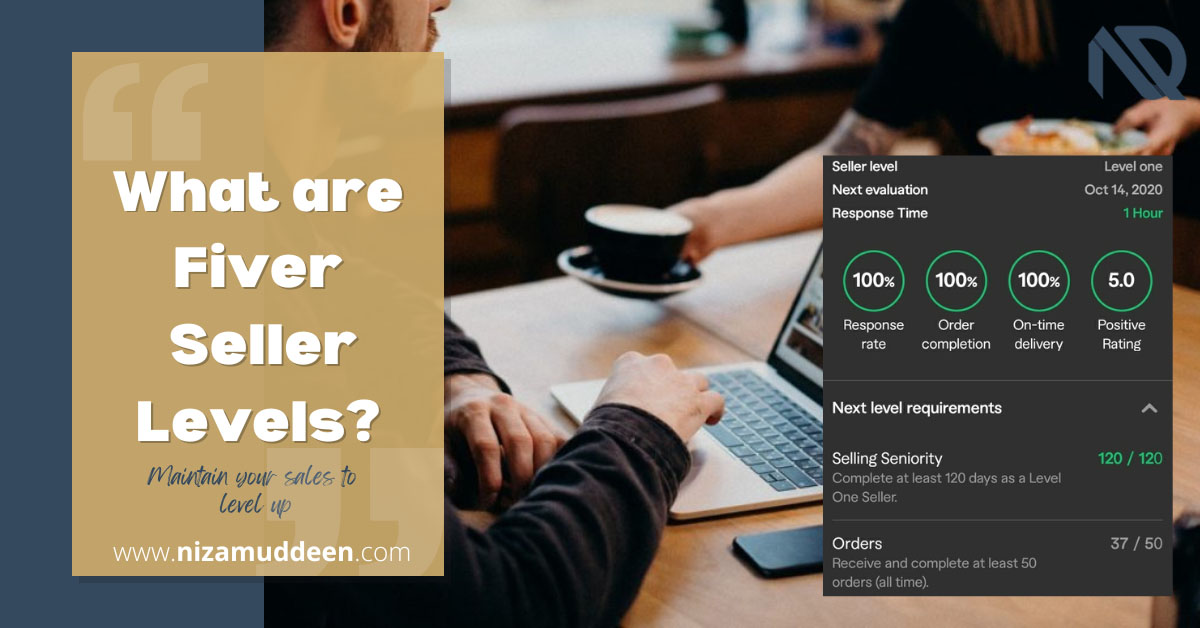If you're diving into the world of freelancing and have your eye on Fiverr, you're probably wondering about the fees involved. Understanding Fiverr's seller fees is crucial for any freelancer looking to set their prices effectively. After all, the percentage taken by Fiverr can impact your overall earnings and how you structure your service offerings. So, let's break down how Fiverr’s fee structure works and what it means for your bottom line.
Overview of Fiverr's Fee Structure

Fiverr has a straightforward fee system, but it's essential to grasp the details to make the most of your freelance experience. Here’s a breakdown of what you need to know:
- Standard Commission: Fiverr takes a commission of 20% from every transaction. This means if you sell a service for $100, you’ll receive $80 after their cut. It’s a hefty percentage, but it facilitates the marketing, platform maintenance, and customer support that Fiverr provides.
- Service Fees: In addition to the seller fees, Fiverr also charges service fees to buyers, which are generally around $2 to $40, depending on the total purchase amount. While this doesn’t directly affect sellers, it’s worth noting since it influences buyers' decisions.
- Promoted Gigs: Sellers can choose to promote their gigs for a fee, which can enhance visibility and potentially increase sales. However, be cautious, as these fees are an additional cost that can impact profits.
Fiverr also allows sellers to set up "Gig Extras" for additional services, which can help boost your earnings, but remember that the 20% commission applies here as well.
Overall, while Fiverr’s fees are standard in the freelance marketplace, understanding how they operate is essential in crafting a successful strategy and ensuring that your hard work translates into fair compensation.
Also Read This: How to Make an ID on Fiverr: A Step-by-Step Guide
Breakdown of Seller Fees on Fiverr

When you join Fiverr as a seller, one of the first things you need to get acquainted with is the fee structure. Understanding how Fiverr breaks down its seller fees can help you set accurate pricing for your services. So, let’s dive into the numbers!
Fiverr has a straightforward fee model, primarily consisting of:
- Commission Fee: Fiverr takes a 20% commission on every completed order. This means if you sell a service for $100, Fiverr keeps $20, leaving you with $80.
- Processing Fee: When you withdraw your earnings, Fiverr might also charge a processing fee based on your payment method. This can vary widely - for instance, a direct bank transfer might incur smaller fees compared to PayPal.
- Extra Charges: Depending on the service you choose, there may be additional charges like currency conversion fees or fees for specific withdrawal methods.
Here’s a simple table summarizing how fees might look based on different earnings:
| Service Price | Fiverr Fee (20%) | Your Earnings |
|---|---|---|
| $50 | $10 | $40 |
| $100 | $20 | $80 |
| $200 | $40 | $160 |
Understanding these fees is crucial for sellers to remain profitable and ensure they attract clients without underpricing their services.
Also Read This: What Freelance WordPress Developers Can Earn
Impact of Fiverr's Fees on Sellers' Earnings

Now that we've broken down the seller fees on Fiverr, let's chat about how these fees impact sellers' earnings. It's essential to recognize that while Fiverr offers a platform for freelancers to showcase their skills, the fees can have a significant bearing on take-home income.
First, let's talk about profitability. Many sellers might find the 20% commission to be quite steep, especially when they account for other potential costs. It’s vital to position your prices in a way that not only covers these fees but also aligns with the market value of your services.
Consider this: if you're offering branding services and set your gig price at $150, you’d effectively take home $120 after Fiverr's cut. Now, if you factor in additional expenses like software or marketing costs, this might decrease your profit margin even further.
Moreover, the perception of value plays a role, too. If you feel constrained by Fiverr’s fees, this can lead you to offer services at lower prices, which can affect the quality of work delivered and how clients perceive your expertise. Many successful sellers actually build their gig prices with Fiverr's fees in mind, ensuring they still yield significant earnings.
Lastly, sellers often consider diversifying their income streams beyond Fiverr, using the platform as part of a broader strategy to stabilize and increase their earnings. By understanding Fiverr's fees and planning accordingly, you can continue to thrive, even in a competitive marketplace.
Also Read This: Can You Get Fiverr Credits Back into Your Account?
Comparing Fiverr's Fees to Other Freelance Platforms
When you're diving into the freelance world, understanding the fees associated with different platforms can make a significant difference in your earnings. Fiverr, being one of the most popular platforms, has its own fee structure that deserves attention, especially when juxtaposed against other freelance platforms like Upwork, Freelancer, and Guru. Let’s break it down.
Fiverr's Fees
- Fiverr charges a 20% commission on every sale, regardless of the service offered.
- Sellers must also be mindful of payment processing fees, which can vary based on the payment method.
Upwork's Fees
- Upwork employs a sliding scale for fees: 20% for the first $500 earned from a client, 10% for billings between $500.01-$10,000, and 5% for amounts over $10,000.
- This tiered system can actually reward long-term clients more generously than Fiverr’s flat rate.
Freelancer's Fees
- Freelancer charges 10% for fixed-price projects and 20% for hourly projects.
- They also have a membership option to reduce fees, unlike Fiverr.
Guru's Fees
- Guru uses a similar model, charging between 5-9% based on your subscription plan.
- This flexibility can be beneficial if you plan to work regularly on the platform.
All things considered, Fiverr's 20% fee might seem steep at first glance, especially when other platforms offer tiered pricing. However, it’s essential to weigh the pros and cons of each platform, including audience reach and ease of use.
Also Read This: How to Take Fiverr Test
Strategies for Sellers to Maximize Earnings Despite Fees
So, you've got the lowdown on Fiverr's fees. Now, how do you navigate these waters to ensure your earnings remain healthy? Here are some savvy strategies that can help you boost your bottom line.
1. Optimize Your Gig Listings
- Use relevant keywords in your titles and descriptions to improve visibility in search results.
- Create eye-catching thumbnails to draw in potential buyers.
2. Offer Package Deals
- Include multiple service tiers (Basic, Standard, Premium) to provide options for varying budgets.
- Consider bundling services to increase the perceived value.
3. Build Strong Relationships with Clients
- Focus on excellent customer service to encourage repeat business.
- Happy clients can lead to positive reviews, which boost your profile and attract new customers.
4. Utilize Add-Ons
- Fiverr allows sellers to offer extras for an additional fee. Make use of these to upsell additional services.
- Think about what might enhance the client experience—these can be simple to add!
5. Promote Your Services Externally
- Don’t rely solely on Fiverr’s traffic; share your gigs on social media and your personal network.
- Having a dedicated website or portfolio can also help showcase your work.
By following these strategies, you can reduce the impact of Fiverr's fees and enhance your overall earnings, turning a potentially restrictive situation into a profitable venture!
Understanding Fiverr's Seller Fees: What Percentage Does Fiverr Take?
Fiverr is a popular online marketplace where freelancers can offer their services, known as "gigs," to a global audience. While it presents a fantastic opportunity for sellers, understanding the platform’s fee structure is crucial for maximizing profits. Here’s a breakdown of Fiverr's seller fees:
As a seller on Fiverr, the platform charges a service fee based on the sale price of your gig. The fee structure is as follows:
| Service Price | Fiverr Fee |
|---|---|
| Up to $40 | 20% of the total sale price |
| $40.01 to $199.99 | $8 + 20% of the amount over $40 |
| $200 and above | $40 + 15% of the amount over $200 |
In addition to the service fee, sellers may also encounter:
- Currency Conversion Fees: When payments are made in different currencies.
- Withdrawal Fees: Fees incurred when transferring earnings to your bank account or payment service.
- Optional Add-on Fees: Additional charges for services like promoting gigs.
It’s vital for sellers to consider these costs when determining pricing strategies for their gigs. Understanding Fiverr's seller fees allows for better financial planning and ensures that sellers can retain as much of their hard-earned money as possible.
In conclusion, being aware of Fiverr's fee structure and how it impacts your earnings as a seller is essential for making informed decisions about pricing and services offered on this platform.



